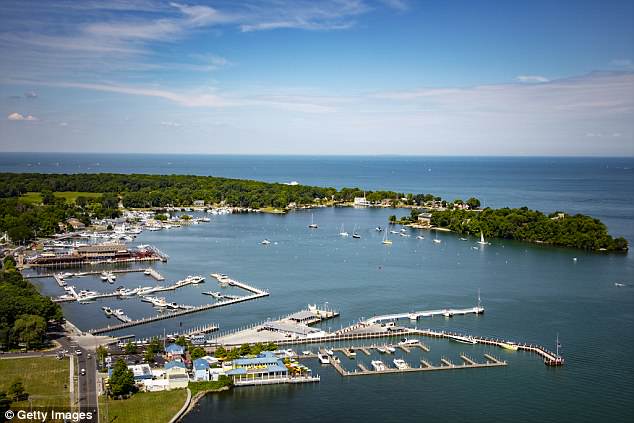The 1829 “Serpent” Shipwreck Mystery on the Great Lakes Finally Solved

The 1829 “Serpent” Shipwreck Mystery on the Great Lakes Finally Solved
A ship which sank in Lake Erie nearly 200 years ago was finally identified.
The shipwreck hunters in Cleveland have examined the ship’s remains and believe that it is the doomed vessel, known as the “Lake Serpent.”
Expert wreckage analysis showed that it is the oldest wreck in the entire lake.
In 1829, the Serpent sank and the three sailors on board died in the disaster.
Lake Erie later became known as a graveyard for hundreds of ships, because of its devastating storms.

The wreck was fist spotted in 2015 by Tom Kowalczk, a member of the Cleveland Underwater Explorers, when it appeared on his sonar screen.
Dives to the site and analysis of the remains was conducted over eight days this summer and allowed experts to conclusively identify the wreck as the Lake Serpent.
Many shipwrecks have been found in the lake in recent years by a small, dedicated band of hunters.
To determine whether the latest discovery to be announced was indeed the Lake Serpent, divers had to get a closer look at the wreckage and remove a layer sediment that covered part of the ship.
‘Because it’s so small, that makes it very, very old,’ said Mr Kowalczk.
‘That puts it way back to an early time frame and really limits the possibilities.’
Members of the Cleveland Underwater Explorers and the museum reverted back to historical records and newspaper clippings to find names of potential vessels.
Original investigations narrowed the list of possible ships to three, with Lake Serpent deemed the most likely.
Newspaper reports from the time provided vital clues in confirming this hypothesis.

On October 8, 1829, the Cleveland Weekly Herald reported that the Lake Serpent had left four weeks earlier to get stone from Put-In-Bay on Lake Erie’s South Bass Island.
‘The newspaper was able to confirm that the Lake Serpent had loaded the stone at Put-In-Bay, but hadn’t been seen since,’ the Cleveland Underwater Explorers reveal on their website.
It was also reported at the time that the bodies of the Lake Serpent’s captain and his brother, Ezra and Robert Wright, washed ashore in Lorain County, Ohio in the first week of October 1829.
There is some debate among professionals in the field but the museum has released the findings which provide several signs to suggest that it is the missing cargo ship, they say.

Mr Kowalczk believes his finding is almost certainly the Lake Serpent.
‘We haven’t found anything that says it’s something different,’ he said.
The schooner was built in 1821 in Cleveland at a time when the city had less than 1,000 residents. Its job was to carry cargo – produce, flour, whiskey and limestone – to ports along the lakes.
It went down eight years later with a load of stone and a small crew near Kelleys Island off the Ohio shoreline.
The ship had an unusual carving of a serpent’s head in the bow – an uncommon feature for a boat of this kind in that era.

Subscribe to our newsletter!